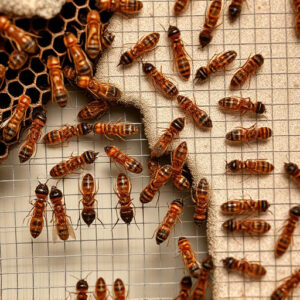GE Dishwasher Repair: Simplifying Clean-Up with Easy Troubleshooting
GE dishwashers may face issues with cleaning power, water leaks, heating/noises due to blocked filte…….

GE dishwashers may face issues with cleaning power, water leaks, heating/noises due to blocked filters, faulty seals/hoses, or worn components. Homeowners can troubleshoot basic problems and refer to manuals/online resources for complex fixes. Regular maintenance, like clearing clogs, wiping down interiors, and checking seals, prolongs lifespan and prevents costly repairs.
Dishwashers are a modern convenience, but when they stop performing optimally, it can leave your kitchen in disarray. If you’re facing issues with your GE dishwasher, don’t stress—this comprehensive guide is here to rescue you. We’ll delve into the most common problems, teach you how to diagnose them, and provide a detailed step-by-step repair process. By following these tips, you can get your dishwasher back in top shape for hassle-free clean-up sessions. Additionally, we offer maintenance advice to prevent future disruptions.
- Understanding Common GE Dishwasher Issues
- Diagnosing the Problem: Steps to Take
- Repair Process: A Step-by-Step Guide
- Maintenance Tips for Future Prevention
Understanding Common GE Dishwasher Issues

Many GE dishwashers offer reliable performance, but like any appliance, they can encounter issues over time that disrupt your cleaning routine. Understanding common problems can help homeowners address them proactively or prepare for professional repair. One frequent issue is inadequate cleaning power, often due to blocked filters or spray arms, which prevent detergent from reaching all corners of the machine. Another common problem is water leaks, usually caused by faulty seals or hoses, leading to not only damage to the dishwasher but potentially your kitchen floor as well.
Additionally, dishwashers may fail to heat water, resulting in spotty cleaning, or experience unusual noises, such as loud grinding or squealing, indicating worn-out parts. Over time, certain components like the heating element, pump, or door gaskets can degrade, leading to these and other malfunctions. Recognizing these typical problems equips users to take appropriate measures—whether it’s troubleshooting simple fixes themselves or contacting a professional for complex repairs.
Diagnosing the Problem: Steps to Take

When your GE dishwasher isn’t performing as expected, it’s time to get troubleshooting. Start by checking for any obvious issues—is there water leaking or power at the outlet? If not, ensure connections are secure and check your circuit breaker. Next, examine the filter; a clogged one can disrupt cleaning performance. Remove and clean it according to your dishwasher’s manual.
For more complex problems like odd noises, poor drying, or spotty dishes, follow these steps: compare dishwashers’ operation to their user manuals, consult online resources for common issues specific to GE models, and consider the age of your appliance—older ones might need an upgrade. If you’re still stuck, a professional repair service can provide tailored assistance.
Repair Process: A Step-by-Step Guide

Maintenance Tips for Future Prevention

Regular maintenance can significantly extend the lifespan of your GE dishwasher and prevent costly repairs. Start by ensuring proper drainage; check the drain hose for clogs or kinks and clean it regularly to maintain water flow efficiency. Also, wipe down the interior walls and racks with a damp cloth after each wash cycle to remove food residue buildup, which can lead to poor cleaning performance and even damage the spray arms over time.
Don’t forget to inspect and clean the door gaskets and seals periodically to prevent leaks. A weak seal could cause excessive water usage or even flooding. Lastly, let the dishwasher air dry after each load; this simple step helps to prevent moisture buildup, which can lead to mold or mildew growth inside the machine.







